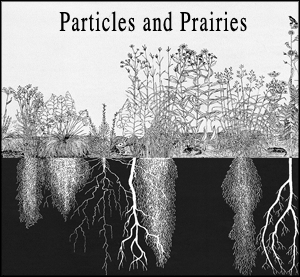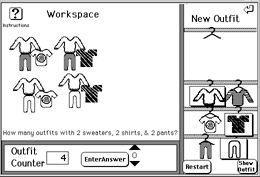I spent a year consulting for Dr. Barbara Bowen of External Research in the Advanced Technology Group at Apple Computer. During this period I developed two videodiscs and accompanying SuperCard software so she could showcase the partnerships between Apple engineers and university and lab researchers. The videodiscs included projects presented at two open houses she had with researchers.
1989 External Research Open
-
IRIS Intermedia (Norm Meyrowitz/Brown)
-
Dynamic Handbook of Medical Therapeutics (Mark Frisse/Wash U)
-
Medical Knowledge Management System (Robert Greenes/Harvard)
-
NCSA-Scientific Visualization (Tim Krauskopf/U. Ill)
-
Automatic Knowledge Engineering for Intelligent Tutoring Systems (Bev Woolf/ UMass)
-
Scientific Imaging/Medicine (Dave Roseman/ Rush Medical Center)
-
Perseus (Greg Crane/Harvard)
-
Specific Foundations of Graphics (Al Barr/CalTech)
-
HyperMedia Education (Charles Kerns/Stanford)
|
1990 Accelerating Innovation Open House
-
The Aligner, Kevin Dowling, Mike Blackwell & Hans Moravec, Carnegie Mellon University (Apple liaison: Louis Roehrs)
-
CSILE, Marlene Scardamalia and Carl Bereiter, Ontario Institute for Studies in Education (Apple liaison: Anne Nicol)
-
ColorSpace- Color and the Human Interface, Bill Cowan & Jim Lai. University of Waterloo (Apple liaison: Lewis Knapp )
-
Real-Time Audio Processing, Barry Vercoe, MIT (Apple liaison:
Dean Blackketter)
-
VOYAGER, Speech Recognition System, Victor Zue, MIT (Apple liaison: George White)
-
Design for Injection Molding, Kos Ishii, Ohio State University - (Apple liaison: Lee Hornberger)
-
The Elastic Charles: A Hypermedia Journal, Glorianna Davenport & Hans Peter Brondmo. MIT (Media Lab) (Apple liaison: Mike Liebhold)
-
Satellite Data Reception and Display, Bill Emery & Charles Norris, University of Colorado (Apple liaison: Peter Zukoski)
-
The Network Project: Ansychronous Distributed Computing, Gunther Sawitzki and J. Lindenberg, Universities of Heidelberg and Karlsruhe (Apple liaison: Larry Taylor)
|




